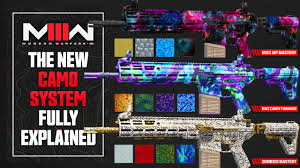Exploring the World of Camos: From Military Applications to Aviation Safety
The term “camos” conjures up images of soldiers in the field, blending seamlessly with their surroundings to avoid detection. While military camouflage is perhaps the most well-known application, the concept of camos extends far beyond the battlefield. From high-tech aviation safety to fashion, camos have become a versatile tool in various industries. This article delves into the multifaceted world of camos, exploring its history, evolution, and contemporary applications.
Military Camouflage: A Tactical Evolution

Military camouflage, or camos, has been a critical component of warfare for centuries. The primary goal of military camouflage is to protect personnel and equipment from enemy observation. This is achieved through the use of color, materials, and patterns that help soldiers and vehicles blend into their surroundings. The concept of camouflage as a military tactic gained prominence during World War I, when visual deception became essential to modern military strategies.
In its early days, camouflage was simple and rudimentary. Rifle units in the mid-18th century were among the first to adopt inconspicuous uniforms in drab colors. However, as weaponry evolved, with longer-range and more accurate firearms, the need for more effective camouflage became apparent. By the time of World War I, camouflage had become a sophisticated form of military deception, utilized not only in uniforms but also across various forms of military equipment, including vehicles, ships, and aircraft.
The French were pioneers in the development of military camouflage, and by 1915, they had introduced advanced techniques that were soon adopted by other nations. During both World Wars, artists were recruited as camouflage officers, creating intricate patterns and designs to deceive enemy forces. The famous “dazzle camouflage” used on ships during World War I, for example, involved bold, conspicuous patterns designed to confuse enemy observers rather than conceal the vessels.
Modern Military Camos: Adapting to New Threats

As technology has advanced, so too has the science of camouflage. The 21st century has seen the development of multi-spectral camouflage, which not only hides objects from the naked eye but also from various sensors, including infrared, radar, and thermal imaging. This modern form of camos is essential in an era where surveillance technology is highly sophisticated and pervasive.
One notable example of modern camouflage technology is the Special Operations Tactical Suit (SOTACS), developed by SAAB. Introduced in 2005, SOTACS offers multi-spectral camouflage protection, making it nearly invisible to a wide range of detection methods. This kind of innovation represents the cutting edge of military camos, ensuring that soldiers and equipment remain undetectable in increasingly complex combat environments.
CAMO in Aviation: Ensuring Airworthiness
The concept of camos has also made its way into the aviation industry, albeit in a different form. Here, CAMO stands for Continuing Airworthiness Management Organization, a critical element in maintaining the safety and compliance of aircraft. As air travel becomes more complex and technologically advanced, the role of CAMO has become increasingly important.
Originally introduced in Europe, CAMO is now a global standard, ensuring that aircraft are maintained to the highest standards. These organizations are responsible for overseeing the airworthiness of aircraft, coordinating with regulatory authorities, solving maintenance issues, and conducting record audits. The goal is to ensure that aircraft are safe, reliable, and compliant with all relevant regulations.
CAMO-approved organizations must meet stringent requirements, including having trained and experienced personnel, secure IT infrastructure, and comprehensive maintenance plans. By managing all aspects of aircraft maintenance, CAMOs play a vital role in keeping aircraft operational and minimizing downtime.
The Importance of Trust in CAMO Services

For aircraft owners and operators, choosing a reliable CAMO service is crucial. These organizations act as the eyes and ears of the owner, providing critical information about the aircraft’s condition and ensuring that all maintenance is carried out to the highest standards. Trust is a key factor in this relationship, as the safety of the aircraft and its passengers depends on the quality of the CAMO service.
Leading CAMO providers offer a full suite of regulatory services, including Continuing Airworthiness Management (CAM) and Airworthiness Review Certificates (ARC). These services ensure compliance with various regulatory frameworks, including those of the European Union Aviation Safety Agency (EASA) and other national aviation authorities.
Camos in Fashion and Art: A Symbol of Rebellion
Beyond its practical applications in the military and aviation industries, camos have also made their mark in fashion and art. Since the early 20th century, camouflage patterns have been used by artists and designers to make bold statements, often with anti-war or countercultural themes. The work of artists like Andy Warhol, who incorporated camouflage into his pop art, and fashion designers who use military-inspired patterns in their collections, demonstrate the cultural significance of camos.
In fashion, camouflage has become a symbol of rebellion and individuality. Military-inspired clothing is popular in streetwear and has been used as a form of political protest. The adoption of camos in fashion reflects its versatility and enduring appeal as a design element.
Conclusion
Camos, in all its forms, is a powerful tool with a wide range of applications. From its origins in military tactics to its role in aviation safety and its influence in fashion and art, camos have proven to be more than just a means of concealment. It is a symbol of adaptability, innovation, and cultural expression. As technology continues to evolve, so too will the applications of camos, ensuring its relevance in both practical and creative realms.




